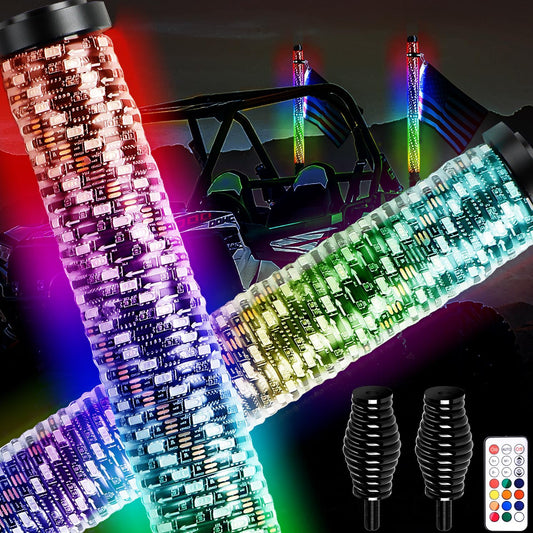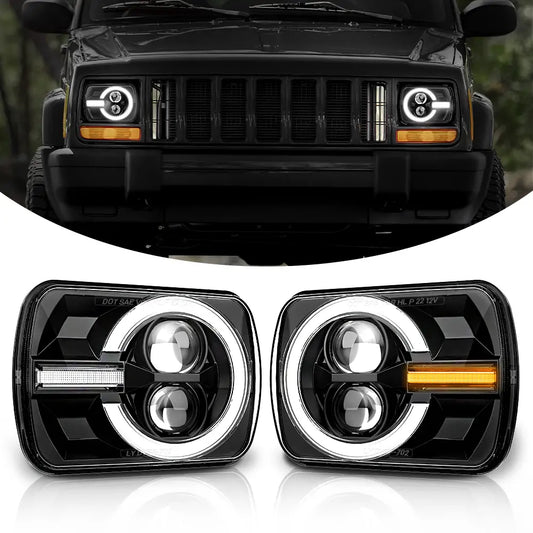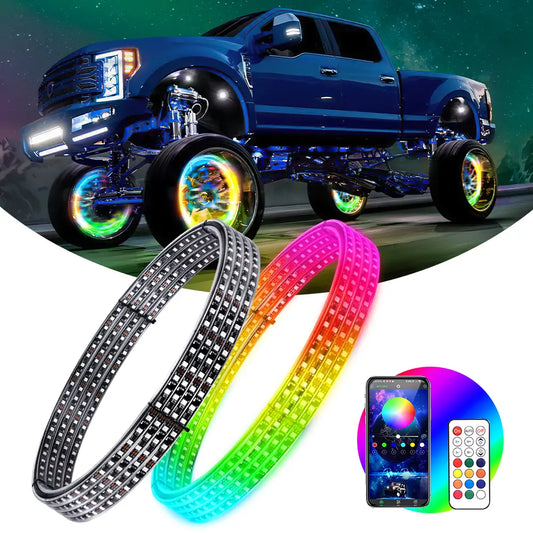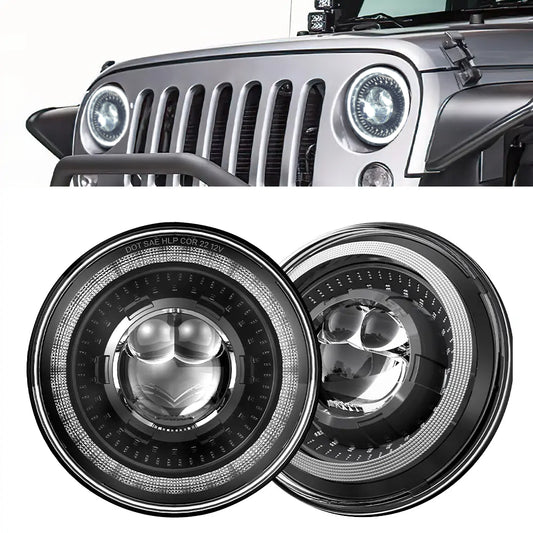When upgrading your vehicle’s lighting, you’ve probably heard terms like “lumens” and “watts” thrown around. But if you’re not an engineer, these words can feel confusing—or even misleading. Are brighter lights just about higher wattage? Why do some LEDs with lower watts outshine traditional bulbs? Let’s cut through the jargon and break down what these metrics really mean for your off-road truck, Jeep, car or motorcycle. By the end, you’ll know exactly how to pick lights that balance brightness, efficiency, and reliability.
Lumens and Watts: What’s the Difference?
1. Lumens = Real-World Brightness
Think of lumens as the “brightness score” of a light. The higher the lumens, the more light it throws onto the trail, road, or path ahead. For example:
- A standard halogen bulb might produce 1,200 lumens.
- A modern LED light can deliver 6,000 lumens or more—enough to turn pitch-black trails into daylight.
Lumens matter because they directly impact how well you see hazards like rocks, potholes, or wildlife during night rides.
2. Watts = Energy Consumption
Watts, on the other hand, measure how much electricity a light uses. A 100W halogen bulb isn’t necessarily brighter than a 30W LED—it’s just hungrier for power. High-wattage lights can strain your vehicle’s electrical system, especially in off-road rigs or motorcycles where battery capacity is limited.
The Critical Link: Efficiency (Lumens per Watt)
Here’s where things get interesting. The magic of LED technology lies in its efficiency—how much light it creates from each watt of energy. Let’s compare:
Halogen bulbs: Generate about 20 lumens per watt. A 60W halogen produces ~1,200 lumens.
LEDs: Deliver 80–150+ lumens per watt. A 30W LED can hit 3,600 lumens—triple the brightness of that halogen, using half the power!
This efficiency isn’t just a technical win. For off-roaders and on-roaders, it translates to:
- Longer battery life during night adventures.
- Less heat buildup, protecting your lights and wiring.
- More room for accessories (winches, radios, etc.) without overloading your alternator.
Why This Matters for Off-road and On-Road Lighting
1. Avoid “Power Hungry” Lights That Leave You Stranded
Imagine crawling through a remote trail at midnight, only to have your lights drain the battery. Halogens and HIDs (High-Intensity Discharge lights) are notorious for this. LEDs solve the problem by delivering more light with less power. For example:
Four 40W LED lights (160W total) consume far less energy than four 100W halogens (400W total)—yet they’re 2–3x brighter.
2. Heat: The Silent Killer of Cheap Lights
High-wattage lights generate intense heat, which can melt lens housings or even ignite dust or oil in off-road environments. LEDs run cooler, thanks to their efficiency. Many quality models include built-in heat sinks or fans to further protect against overheating.
3. Match Brightness to Your Riding Style
Not all adventures need the same light output:
- Trail Riding: Prioritize 3,000–6,000 lumens per light with a wide beam pattern to illuminate bushes, ruts, and obstacles beside your vehicle.
- Desert Racing: Opt for 8,000+ lumens in a focused spot beam to see dunes or cliffs hundreds of feet ahead.
- Daily Motorcycle Use: Stick to 2,000–4,000 lumens with a DOT-compliant beam to avoid blinding other drivers.
Choosing the Right Lights: A 3-Step Guide
Step 1: Focus on Lumens, Not Wattage Claims
Ignore phrases like “Equivalent to 100W Halogen!”—they’re marketing fluff. Check the product’s actual lumen rating. For off-road use, aim for at least 3,000 lumens per light.
Step 2: Calculate Your Power Budget
Add up the wattage of all lights and accessories. If your alternator outputs 100A (≈1,200W at 12V), leave 20–30% headroom for safety. For example:
- 4 LED lights at 40W each = 160W
- Winch (300W) + Radio (50W) = 350W
- Total: 510W (well under 1,200W capacity).
Step 3: Prioritize Beam Patterns and Durability
- Flood/Combo Beams: Spread light widely for slow, technical trails.
- Spot Beams: Throw light far for high-speed runs.
- IP67/IP68 Rating: Ensures lights survive mud, water, and vibrations.
Debunking Common Myths
Myth 1: “Higher Wattage = Better Performance”
Truth: A 30W LED with 4,000 lumens outperforms a 100W halogen (2,000 lumens) while using 70% less power.
Myth 2: “All High-Lumen Lights Are Glare Machines”
Truth: Quality LEDs with proper reflectors and DOT/SAE certifications focus light precisely, minimizing glare for oncoming traffic.
The Bottom Line: Smarter Light, Safer Ride
Understanding lumens and watts isn’t just technical nitpicking—it’s about making informed choices that keep you safe and your vehicle reliable. Whether you’re navigating rocky trails or cruising highways, LEDs offer the perfect balance of brilliant light, efficient power use, and rugged durability.
So next time you shop for lights, remember:
- Lumens tell you how bright it is.
- Watts tell you how much it “costs” your vehicle.
- xEfficiency (lumens/watt) is where the magic happens.
Upgrade wisely, and let your lights illuminate the path—not drain your battery or blur your vision.




